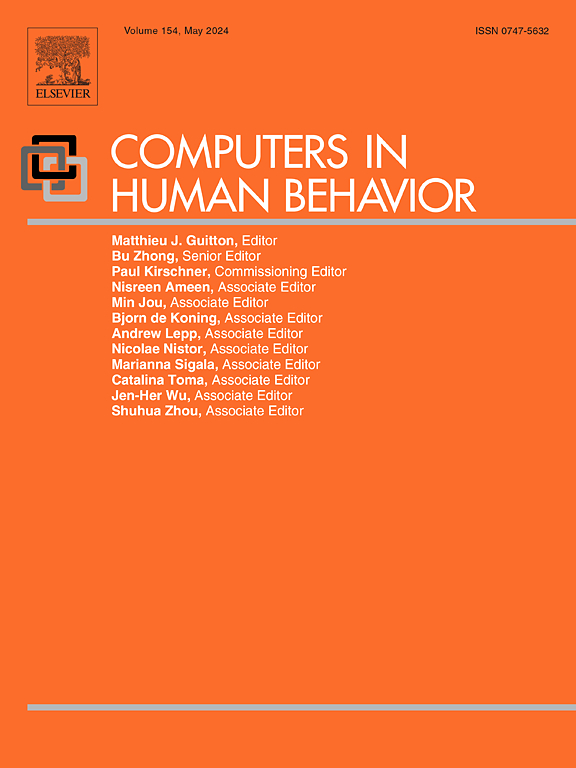The buffering of autonomic fear responses is moderated by the characteristics of a virtual character
IF 9
1区 心理学
Q1 PSYCHOLOGY, EXPERIMENTAL
引用次数: 0
Abstract
The presence of a conspecific can mitigate autonomic responses to aversive stimuli, an effect known as social buffering. Nowadays, social interactions are often virtual, yet virtual social buffering effects remain poorly understood. This work presents five studies that systematically test the conditions required for virtual social buffering. We assessed participants’ emotion ratings and skin conductance responses when they were presented with neutral or fear-inducing sounds alone or in the presence of a virtual character with a varying extent of human-like features (virtual female or male person, wooden puppet, point cloud). The characters were presented using the same social framing, i.e., had the same social meaning. Our results show a significant reduction in SCR responses to fear-inducing sounds in the presence of a virtual character, but only if it is embodied as a woman or a wooden puppet. Clarifying the role of the social frame, a control study showed no social buffering effects if the wooden puppet was presented without the social frame. Our results show that the characteristics of a virtual character significantly moderate the social buffering of fear responses. Our findings shed light on the nature of virtual social buffering effects and are relevant for developing virtual applications for clinical and societal interventions.

虚拟角色的特征对自律神经恐惧反应的缓冲作用具有调节作用
同物的存在可以减轻对厌恶刺激的自主反应,这种效应被称为社会缓冲。如今,社交互动往往是虚拟的,但虚拟社交缓冲效应仍然知之甚少。这项工作提出了五项研究,系统地测试了虚拟社会缓冲所需的条件。我们评估了参与者的情绪评分和皮肤电导反应,当他们被单独呈现中性或引起恐惧的声音时,或者在具有不同程度的人类特征的虚拟角色(虚拟女性或男性、木制木偶、点云)面前时。这些人物使用相同的社会框架来呈现,即具有相同的社会意义。我们的研究结果显示,当虚拟角色出现时,SCR对引起恐惧的声音的反应会显著减少,但只有当虚拟角色是女性或木偶时才会如此。澄清社会框架的作用,一项对照研究表明,如果没有社会框架的木制木偶出现,没有社会缓冲效应。我们的研究结果表明,虚拟角色的特征显著地调节了恐惧反应的社会缓冲。我们的研究结果揭示了虚拟社会缓冲效应的本质,并与开发临床和社会干预的虚拟应用相关。
本文章由计算机程序翻译,如有差异,请以英文原文为准。
求助全文
约1分钟内获得全文
求助全文
来源期刊

Computers in Human Behavior
Multiple-
CiteScore
19.10
自引率
4.00%
发文量
381
审稿时长
40 days
期刊介绍:
Computers in Human Behavior is a scholarly journal that explores the psychological aspects of computer use. It covers original theoretical works, research reports, literature reviews, and software and book reviews. The journal examines both the use of computers in psychology, psychiatry, and related fields, and the psychological impact of computer use on individuals, groups, and society. Articles discuss topics such as professional practice, training, research, human development, learning, cognition, personality, and social interactions. It focuses on human interactions with computers, considering the computer as a medium through which human behaviors are shaped and expressed. Professionals interested in the psychological aspects of computer use will find this journal valuable, even with limited knowledge of computers.
 求助内容:
求助内容: 应助结果提醒方式:
应助结果提醒方式:


